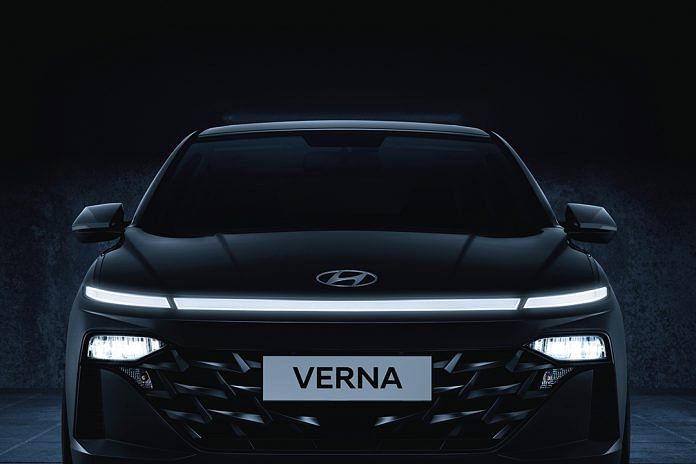With the introduction of the new Hyundai Verna, Mercedes-Benz A220d becomes the cheapest diesel-powered sedan in the Indian market — yours for a shade under Rs 50 lakh.
Last week, I found myself on the amazing Delhi-Mumbai Expressway again driving the fourth-generation Hyundai Verna amid frequent spells of rain showers. The car was a pleasure to drive, and my review of it will be out only when the embargo lifts.
Crucially, though, the new Verna does not feature a diesel motor and instead has a naturally-aspirated and turbocharged petrol engine. With that, the last affordable diesel sedan has exited the market.
It’s not just Verna, diesel power has been disappearing across the board in the past few months. The Honda City doesn’t have a diesel option anymore, nor does the Amaze. Hyundai removed the diesel option from the Aura, Grand i10 Nios, as well as the i20. Maruti Suzuki and Skoda Volkswagen exited the diesel segment a few years ago. Even the latest Toyota Innova has lost a diesel option.
In the early 2010s, not having a diesel option was anathema for Indian carmakers. The price differential between diesel and petrol, coupled with the fuel efficiency (particularly of engines like the popular Maruti-Suzuki 1.3L DDiS that was fitted on cars ranging from the Swift to the Ciaz), was a major driver of sales. Diesel, which was the fuel of choice in large vehicles, had become the fuel of choice in smaller cars as well, so much so that an estimated two-thirds of Swift sales were of diesel models and Maruti did not even bother fitting the Brezza with a petrol motor when it launched the car in 2016. If you did not have a diesel engine option, you were doomed — something Honda learned to its cost back then as sales of their popular SUV, the CR-V, cratered because rivals had diesel motive power.
Also read: Delhi-Mumbai Expressway is impressive but Indians’ driving lanes apart
The final nail in the coffin
From 1 April, there will be no diesel hatchbacks or sedans in the Indian market, except Tata Altroz, which will be RDE-compliant. That is the date when phase 2 of the Bharat Stage (BS) VI emission standards, which will incorporate Real Driving Emissions (RDE) norms, will kick in. These are strict new measurements of pollutants — and not just carbon gasses, but also Nitrogen Oxides (NOx) emitted from the tailpipe. Meeting these emission norms means using better catalysts and filters, which is not a major problem for petrol cars but a huge cost for diesel models. The latter is where the Diesel Particulate Filter (DPF) needs to be replaced with a very expensive Selective Catalytic Reactor (SCR). This would make diesel vehicles, particularly hatchbacks, unaffordable — an SCR is believed to cost in excess of Rs 1 lakh more than a DPF.
Luxury sedans from Mercedes-Benz and BMW will retain diesel engines, though Audi only sells petrol cars and Lexus has gone the hybrid route. ‘Affordable’ diesel cars will be restricted to SUVs, and that too only from certain manufacturers. The cheapest diesel vehicle in India now is a contest between the Mahindra Bolero Neo and the entry-level specifications of the Hyundai Venue.
Some blame has been put on the Supreme Court, which, in 2015, upheld a decision of the National Green Tribunal to prevent the registration of diesel vehicles for more than 10 years in the NCR, and also prevented (for a year) the registration of all diesel vehicles with an engine capacity of more than 2000cc. With the NCR accounting for almost half the domestic car market at the time, this was a body blow to diesel power. And coupled with the severe winter pollution in the capital, it pushed the Union government to advance the introduction of BS6 emission norms by skipping BS5 norms altogether.
But the truth is, the industry did this to itself.
Also read: India’s auto component industry is clocking billions but road to Atmanirbhar is still bumpy
RDE entry via ‘Dieselgate’
If you read up on the ‘Dieselgate’ scandal, you will understand why the RDE norms came into play. The scandal involved Volkswagen cleverly adapting a software in vehicles that activated emission controls only on a testing rig. On the road, the emissions were 40 times more. This appeared to be a common practice among multiple manufacturers who had, for years, sold the myth of ‘clean diesel’ and how heavier fuel could combine efficiency, power, and lower levels of pollution. Therefore, RDE norms were introduced and SCR was installed on diesel cars to ensure that the emissions on the road are the same as on the test rig.
The 10-year ownership rule in the NCR, the advent of more turbo-petrol engines by manufacturers that try to replicate the ‘wave’ of torque that diesel engines are famous for, and more full-hybrids that bring in incredible fuel efficiency, have made petrol more attractive. Diesel remains popular in the SUV segment. Over the launch of the new Verna, Hyundai India chief operating officer Tarun Garg told me that while only 18 per cent of Verna sales are diesels, for SUVs like the Tucson, the number is 80 per cent, and on the extremely popular Creta, it is 45 per cent. “Sedan and hatchback buyers tend to be younger and have shorter commutes, and they also want the outright power of turbo engines, rather than the efficiency of a diesel,” he pointed out.
While diesel remains popular in the luxury segment, maybe the time is up for both diesel and petrol. The future might be electric after all.
The article has been updated after a clarification from Tata Motors.
@kushanmitra is an automotive journalist based in New Delhi. Views are personal.
(Edited by Humra Laeeq)



